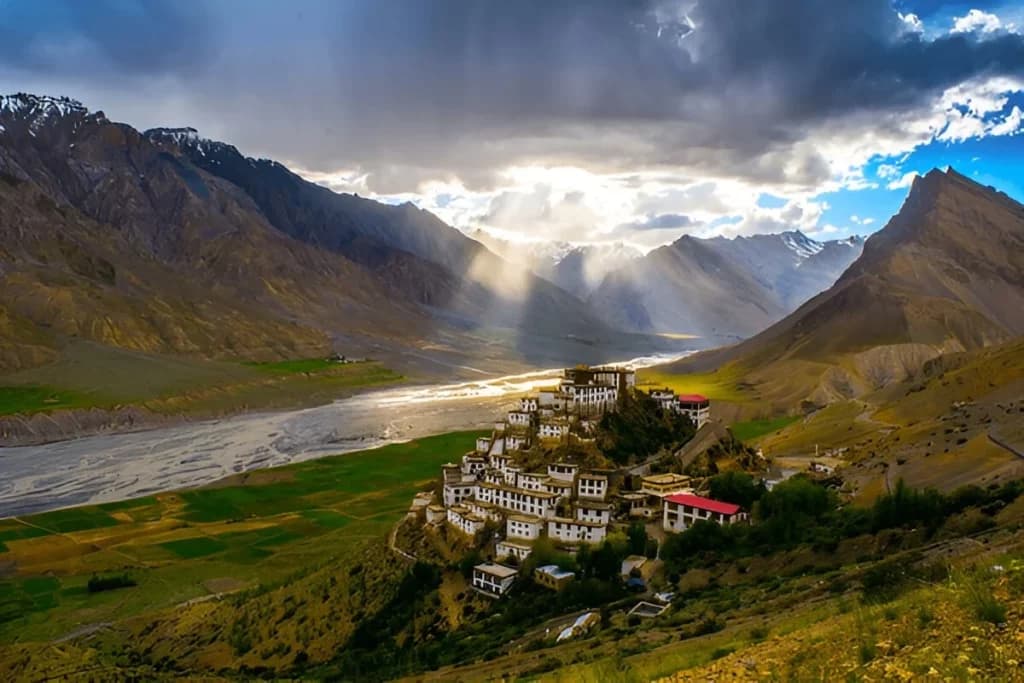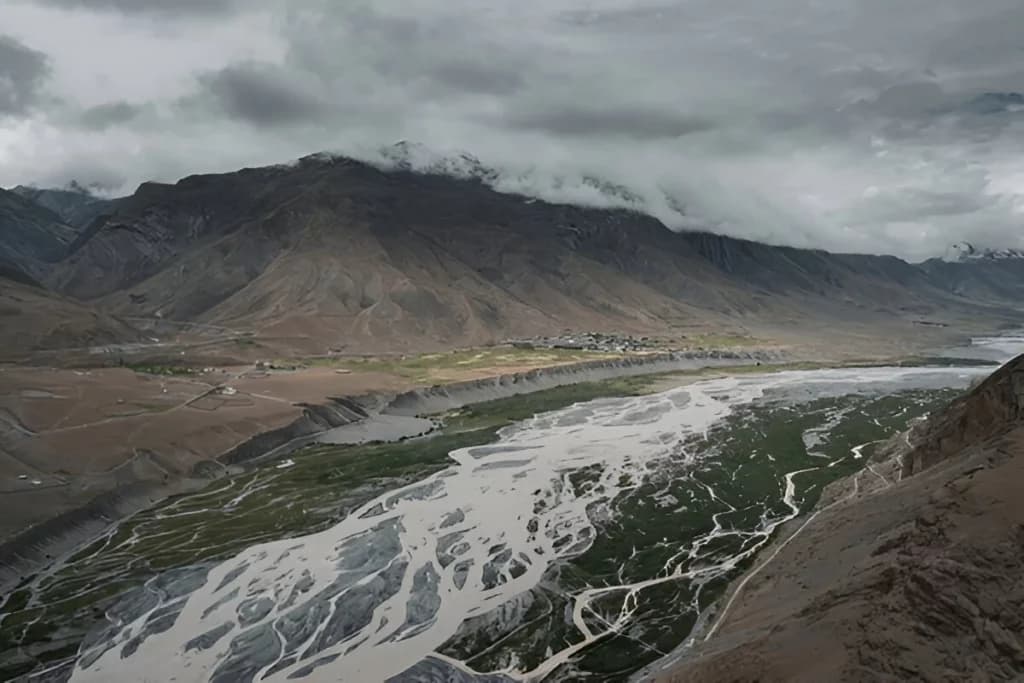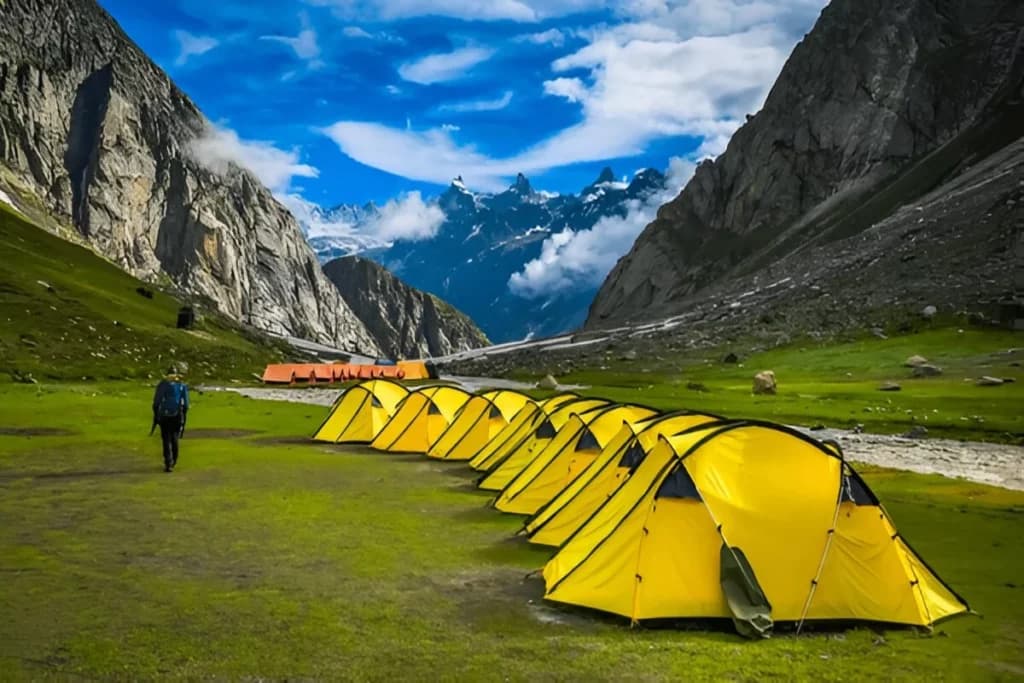
Tucked deep in the Trans-Himalayan region of Himachal Pradesh, Spiti in monsoon transforms into a breathtaking realm of misty mountains, glacial streams, and raw natural beauty. The rain clouds seldom reach this cold desert valley in full force, but the occasional drizzle breathes life into its arid landscapes. Verdant patches bloom around villages, crystal-clear rivers flow with renewed vigour, and the monasteries look even more divine against dramatic grey skies. Monsoon in Spiti brings fewer tourists, making it the perfect season for solitude seekers and adventure lovers alike.
From thrilling road journeys along high mountain passes to peaceful walks in remote hamlets, this season reveals Spiti’s hidden serenity. Whether you’re a photographer, nature lover, or cultural explorer, this Himalayan gem offers unforgettable experiences. Plan your visit with Viacation’s Spiti Valley tour packages for a well-curated trip blending comfort, exploration, and the valley’s raw charm.

The Spiti in monsoon season, stretching from July to September, offers a unique blend of beauty and challenge. Unlike other hill destinations, Spiti receives minimal rainfall due to its location in a rain shadow area. However, light showers occasionally grace the valley, refreshing its barren landscape and adding a hint of green around villages like Kaza, Kibber, and Tabo.
During monsoon in Spiti, temperatures range between 10°C and 20°C, making the days pleasant but the nights quite chilly. The region’s rivers swell, creating dramatic vistas along rugged terrains. This is also the time when waterfalls cascade down rock faces, and the snow-capped peaks shimmer in contrast to the darker monsoon clouds.
While roads might experience occasional blockages, the surreal beauty of the valley under moody skies is worth the challenge. Travelling during this season is best suited for those who enjoy raw landscapes and peaceful explorations away from crowds.

1. Explore Key Monastery
Visiting the ancient Key Monastery is a must during Spiti in monsoon. The monastery appears even more majestic surrounded by fog-covered peaks. You can meditate, talk to monks, or simply enjoy the tranquil view of the Spiti River flowing below.
2. Drive Through Kunzum Pass
The journey through Kunzum Pass (4,590 meters) offers unparalleled adventure. During the monsoon, the landscape glows with a mix of greenery and snow patches, making the drive an unforgettable experience. Stop by the Kunzum Devi Temple and capture the stunning views.
3. Visit Chandratal Lake
Often called the “Moon Lake,” Chandratal is a highlight of the monsoon in Spiti. The lake reflects turquoise hues against snow-laden peaks, creating postcard-perfect scenery. Camping near Chandratal during this season is a spiritual experience in itself.
4. Village Walks and Homestays
Explore small villages like Langza, Hikkim, and Komik. Monsoon brings vibrant wildflowers and clear mountain air, perfect for leisurely strolls. Staying in local homestays lets you experience Spitian hospitality and taste authentic cuisine.
5. Photography and Stargazing
Even during the monsoon, the skies often clear up at night, offering dazzling views of the Milky Way. The contrast of green fields, white stupas, and cloudy skies during the day makes it a photographer’s paradise.

1. Kaza
The heart of Spiti, Kaza, is bustling yet peaceful during the rainy season. The town offers panoramic views, local markets, and easy access to nearby monasteries. During Spiti in monsoon, Kaza becomes a perfect base for exploring the valley.
2. Tabo Monastery
One of the oldest Buddhist monasteries in the Himalayas, Tabo is a serene spiritual retreat. The ancient murals and sculptures inside this 1,000-year-old monastery glow beautifully under soft monsoon light, creating a peaceful ambiance for meditation.
3. Dhankar Monastery
Perched dramatically on a cliff between Kaza and Tabo, Dhankar offers panoramic views of the confluence of the Spiti and Pin Rivers. Its precarious yet picturesque setting is particularly enchanting during the monsoon in Spiti months.
4. Langza Village
Known for its Buddha statue overlooking the valley, Langza is among the most scenic spots in Spiti. Monsoon brings a touch of greenery to its rugged terrain, making it ideal for photography and fossil hunting.
5. Pin Valley National Park
Home to snow leopards and the Himalayan ibex, Pin Valley National Park bursts into subtle shades of green during the monsoon. The lush meadows and cold streams make it perfect for nature walks and wildlife spotting.

1. Is Spiti safe during monsoon?
A. Yes, Spiti in monsoon is relatively safe as the region lies in a rain shadow area and receives minimal rainfall. However, the roads from Manali can face occasional blockages due to landslides. Travellers should check weather updates and plan with local guides for a safe journey.
2. Can I visit Spiti in July?
A. Yes, July is one of the best months to visit Spiti Valley. The roads are open, and the landscape is alive with fresh greenery and blooming flowers. The weather remains pleasant, offering perfect conditions for sightseeing, monastery visits, and scenic drives through the Himalayas.
3. Why is Spiti Valley so famous?
A. Spiti Valley is famous for its ancient monasteries, breathtaking landscapes, and rich Tibetan culture. It’s a paradise for adventure seekers and photographers alike, offering experiences like high-altitude treks, stargazing, and exploring hidden villages surrounded by dramatic Himalayan peaks and clear blue skies.
4. How far is Spiti from Manali?
A. Spiti Valley is approximately 200 kilometres from Manali, and the journey takes about 8–10 hours, depending on road conditions. The route passes through stunning high-altitude passes like Rohtang and Kunzum, offering travellers some of the most scenic and adventurous drives in the Himalayas
5. Is 2 days enough for Spiti Valley?
A. No, 2 days aren’t enough to explore Spiti. Due to its vast landscapes and remote terrain, a minimum of 5–7 days is ideal. During the monsoon in Spiti, travelling slower allows acclimatisation, better exploration, and an immersive experience of the valley’s serene beauty and culture.
Also Read – Best Places to Visit in Spiti
Must Checkout – Things To Do in Spiti